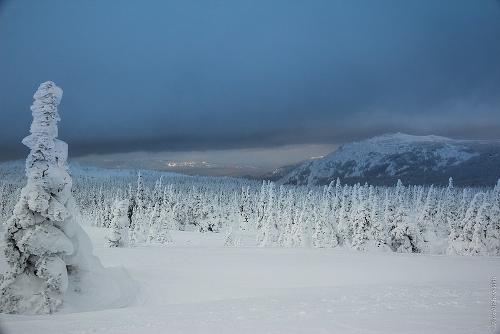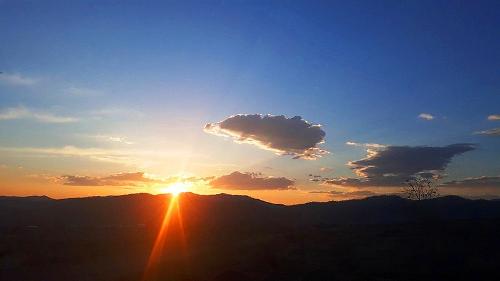RUSSIA
Climate and Weather

Climate and Weather

Cities in RUSSIA
| Moscow | Saint-petersburg |
Climate and Weather
 Winter in the Urals, RussiaPhoto: Alex Alishevskikh CC 2.0 Generic no changes made
Winter in the Urals, RussiaPhoto: Alex Alishevskikh CC 2.0 Generic no changes made
Russia generally has a continental climate, especially the central regions, but actually has almost all types of climates. Only a tropical climate does not occur anywhere, while it can get warmer in Central Russia than at the equator.
In the central areas large differences can be noted between summer and winter, in which often large amounts of snow fall. Also striking is the rapid transition from winter to summer and vice versa. There is talk of a spring and an autumn, but they are in fact short-lived.
The average temperature in the capital Moscow is 19 °C in the hottest summer month of July and -9 °C in the coldest winter month of January.
In the north of Russia and in Siberia there was a polar climate with very cold, long winters and warm, short summers. In the city of Irkutsk, the average temperature in January is -20.8 °C and 17.9 °C in July. In the far north of Siberia, minimum temperatures of around -50 °C are no exception. The lowest average January temperature is found in Verkhoyansk in Eastern Siberia (-50 °C), where the lowest average annual temperature is also found (-16.1 °C). In Verkhoyansk temperatures have been recorded from -69 °C in winter to + 32 °C in summer!
 Sunrise RussiaPhoto: Oleg Bor CC 4.0 International no changes made
Sunrise RussiaPhoto: Oleg Bor CC 4.0 International no changes made
In the south of Russia, around the Black Sea and in the Caucasus, there is a subtropical climate, along the Arctic Ocean an icy tundra climate. Winters here are long and extremely cold, but during the short summer, temperatures above freezing are noted, where all the snow may melt.
Rainfall generally decreases from west to east, except on the Pacific coast and in the mountainous regions of the Mongolia border. Most precipitation falls on the Caucasian coast of the Black Sea, while in the desert and steppe regions of Eastern Siberia much less rain, sometimes less than 50 mm per year.
In the middle of the European zone of the Russian Federation, the average annual rainfall is usually between 500 and 600 mm. Inland most precipitation falls in spring and summer, while in the area east of the Black Sea most precipitation falls in the winter months. Summers are hot and dry in the Central Asian part of Russia. Most of the rain falls here in the spring.
A cold fall wind, the Bora, occurs in winter and the temperatures usually stay well below 0 °C. Other local winds are the Buran in southern Russia and Siberia and the Purga in northern Russia. Both are characterized by the fact that cold, continental polar air is displaced at great speed, often accompanied by drifting snow.
Sources
Graaf, A. van der / Reis-handboek Sovjet-Unie
Elmar
Rusland, Centraal-Azië en de Kaukasus
The Reader’s Digest,
Russia & Belarus
Lonely Planet
Te gast in Rusland
Informatie Verre Reizen
CIA - World Factbook
BBC - Country Profiles
Copyright: Team The World of Info